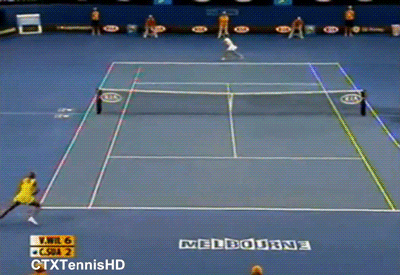Right now I am watching the Semifinal match with Maria and Woz....
Maria is hitting a ton of winners, way more than I see in mens tennis. I mean compared to Roddick who rolls them in, Maria seems to be blasting and painting the lines (obviously can't do this all time). I know this discussion has been had before, but I really think negating the serve of course of mens tennis, that rally's may not be as far off as we are always quick to say - at least in this exact case when she is in god mode.
I also know mens tennis there is much less time to set up, since there is alot more spin. Regardless...
Maria is hitting a ton of winners, way more than I see in mens tennis. I mean compared to Roddick who rolls them in, Maria seems to be blasting and painting the lines (obviously can't do this all time). I know this discussion has been had before, but I really think negating the serve of course of mens tennis, that rally's may not be as far off as we are always quick to say - at least in this exact case when she is in god mode.
I also know mens tennis there is much less time to set up, since there is alot more spin. Regardless...

